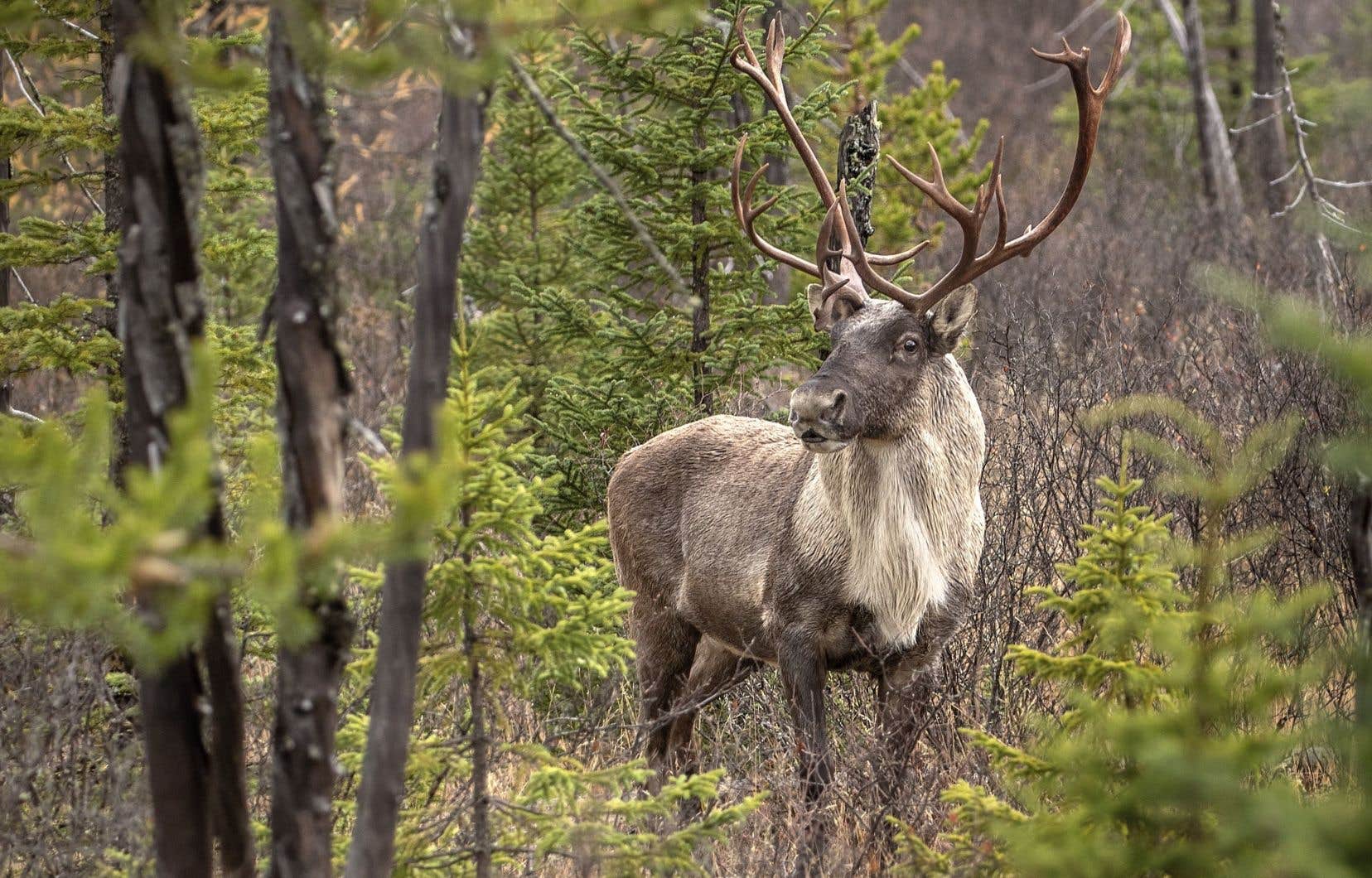Faced with the absence of a Quebec strategy to prevent the disappearance of the woodland caribou, federal Minister of the Environment Steven Guilbeault recommends that the Canadian government impose protection measures for three herds on the verge of extinction. Ottawa’s decision could be announced this week.
“The government of Quebec has been promising us a caribou recovery strategy since 2016. Since then, no concrete action has been taken,” deplores Minister Guilbeault’s office in an email sent to the media on Monday.
It specifies that the attempt to work in collaboration with the CAQ government ended “in failure”, but also that Quebec “broke its promise by presenting regional plans which do not allow the caribou to be reestablished in the province” .
In the absence of the strategy expected for several years and supposed to slow down the decline of the woodland caribou, the Legault government announced last April a “consultation” on measures supposed to better protect three of the 13 populations that live in the territory. And Quebec leaves the door open to the pursuit of industrial activities in habitats suitable for caribou, particularly in Gaspésie.
“Imminent threat”
In this context, the minister concludes that the deer faces an “imminent threat” in Quebec, specifying that this concerns more specifically three herds: Val d’Or, Charlevoix, and Pipmuacan.
Steven Guilbeault therefore sent a letter on Monday to the Minister of the Environment of Quebec, Benoit Charette, to inform him of his intention to recommend to the federal government to impose protection measures for these three herds.
He deplores the absence of a “global strategy” which has been promised and postponed several times, in addition to noting that the “threats” continue to increase in the critical habitat of the caribou, starting with “the ‘lumbering “.
“The scope of the measures currently implemented or planned to protect or restore the habitat of the species is considered insufficient to counter the impacts of the main threats assessed, since the results of the analyzes demonstrate that the habitat has continued to degrade and populations to decline in at least five distribution areas,” explains Mr. Guilbeault.
While he still says he wants to focus on “collaboration” with Quebec, the federal Minister of the Environment is clear: “The health of the caribou is a reflection of the health of our forests. Mature forests, essential to the survival of caribou, promote resilience in the face of forest fires. The protection of our forests is crucial in the face of climate change which increases the intensity and recurrence of the risk of forest fires. Healthy forests ensure the resilience and sustainability of the forest industry for years to come,” he said in a written statement on Monday.
Minister Guilbeault had already concluded last year that “almost all of the critical habitat” of the province’s woodland caribou “is not effectively protected.” According to available estimates, this represents at least 35,000 km2 of forest territories. In this context, the minister was then required to recommend to the federal government to enact protective measures, in accordance with the Species at Risk Act. But the federal government refused to move forward.
The minister’s new recommendation is more targeted. “The populations of Val d’Or, Pipmuacan and Charlevoix are the three most threatened populations in Quebec and the analysis which supported the minister’s opinion indicates that there is an imminent threat to their recovery,” specifies his office .
The general director of the Society for Nature and Parks of Quebec, Alain Branchaud, welcomed Minister Guilbeault’s desire to move forward with a decree. Such a measure “could be very beneficial” to the Pipmuacan herd, he stressed on Monday. According to him, we must do what is necessary to better protect habitats and avoid having to put caribou in enclosures, as is the case in Val-d’Or and Charlevoix, but also for more than half of the herd. barely 25 animals in Gaspésie.
Industrial activities
For the moment, the CAQ government wishes to possibly put in place protection measures for the caribou of Gaspésie, for those currently in captivity in Charlevoix as well as for a population of the North Shore.
But there would be no question of putting a “glass bell” on the last habitats suitable for threatened deer, Minister Charette has already argued. He believes that we should not formally “ban” activities such as logging or mining, but rather see “what can be done or not”, and this, “in respect of the habitat and the beast “.
Quebec is also planning measures aimed at restoring the habitat of Charlevoix caribou, all of which are currently in captivity and whose population only reaches around thirty animals. The government also wants to expand the Caribou-Forestiers-de-Manouane-Manicouagan biodiversity reserve to add an area of approximately 4,826 km2. It would thus exceed 10,000 km2.
As for the Pipmuacan caribou, their habitat has been severely degraded by the logging industry. The herd numbered barely 225 animals, at best, during the most recent inventory, carried out in 2020 over a territory of more than 28,000 km2. “The population is in an extremely precarious state and its capacity for self-sufficiency is unlikely under current conditions,” the government experts concluded.
According to a recent international scientific study, industrial logging carried out over tens of thousands of square kilometers has seriously disrupted the habitats necessary for the survival of the species. Result: 11 of the 13 populations in the province are today at “risk” of extinction.
The leaders of nine Innu communities recently urged the federal government to act to “bring the government of Quebec to order” and prevent the disappearance of caribou from their territories.
Same story with the Assembly of First Nations Quebec-Labrador, which is demanding intervention from Ottawa in the name of respecting their “rights and interests”, due to the cultural and historical importance of the caribou. “In the event of a situation where nothing is done, it is undeniable that the First Nations will take action to counteract the latent behavior of Quebec,” the group recently added in a press release.
